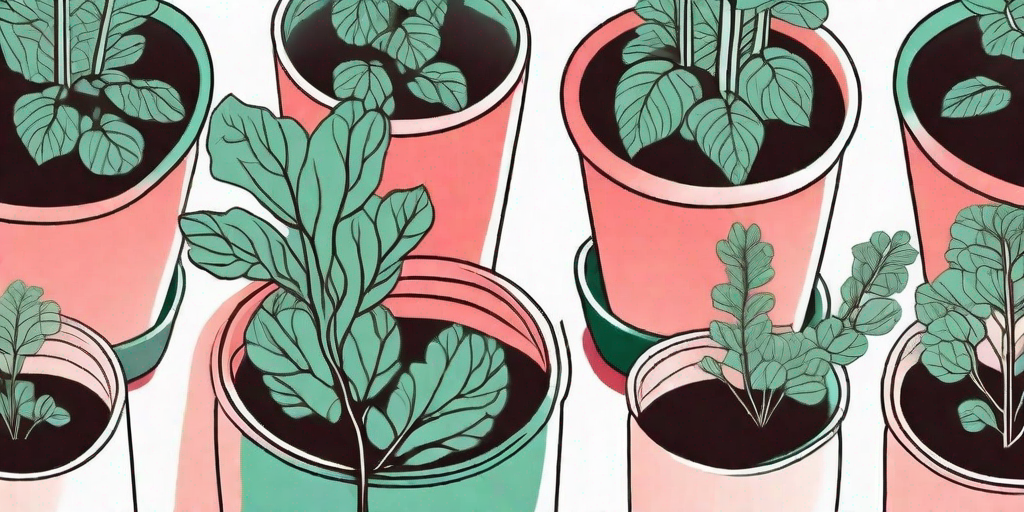
Rhubarb, that tart and tangy vegetable (yes, it's a vegetable, not a fruit!) that's often mistaken for a crimson celery, is making a comeback in the culinary world. From pies to preserves, rhubarb is the unsung hero of the kitchen garden. But did you know that you can grow this vibrant veggie in pots? That's right, you don't need a sprawling garden to enjoy the fresh, tart taste of homegrown rhubarb. Let's dive into the world of container-grown rhubarb, shall we?
The Rhubarb Rundown
What is Rhubarb?
Before we delve into the nitty-gritty of growing rhubarb in pots, let's get to know our star plant a little better. Rhubarb, or Rheum rhabarbarum, is a perennial vegetable known for its tart, tangy stalks. The leaves are toxic, but the stalks are a culinary delight when sweetened and cooked.
Originating from Siberia, rhubarb is a hardy plant that thrives in cooler climates. It's often used in desserts, like the classic rhubarb pie, but it's also making waves in savory dishes, from sauces to salads.
Why Grow Rhubarb in Pots?
Now, you might be wondering, "Why should I grow rhubarb in pots when I can just buy it from the store?" Well, my friend, there are several reasons. First, growing your own rhubarb allows you to control the quality and quantity of your harvest. You know exactly what goes into your plant, from the soil to the water to the love.
Second, it's a fun and rewarding hobby. There's nothing quite like the satisfaction of harvesting your own produce. Plus, rhubarb plants are quite attractive, with their large, lush leaves and vibrant stalks. They make a great addition to any patio or balcony garden.
How to Successfully Grow Rhubarb in Pots
Choosing the Right Pot
When it comes to growing rhubarb in pots, size matters. Rhubarb is a big plant with a big root system. You'll need a pot that's at least 50 cm in diameter and equally as deep. A half-barrel or large tub would work perfectly.
Make sure the pot has good drainage. Rhubarb doesn't like to have wet feet, so to speak. Too much water can lead to root rot, which is a surefire way to kill your plant.
Planting Your Rhubarb
Once you've got your pot sorted, it's time to plant your rhubarb. You can start rhubarb from seeds, but it's easier and quicker to start from crowns or divisions from mature plants. Plant the crowns so that the top is just level with the surface of the soil.
Use a good quality potting mix, preferably one that's rich in organic matter. Rhubarb is a heavy feeder, so it needs nutrient-rich soil to thrive. You can also add a slow-release fertilizer to give your plant a good start.
Caring for Your Potted Rhubarb
Rhubarb is a fairly low-maintenance plant, but it does need some care to produce those delicious stalks. Water your plant regularly, but be careful not to overwater. The soil should be moist, but not waterlogged.
Feed your rhubarb with a high-nitrogen fertilizer every spring to encourage leafy growth. Remember, it's the stalks we're after, not the flowers, so pinch off any flower stalks as soon as they appear.
Harvesting and Using Your Rhubarb
When and How to Harvest
Patience is key when it comes to harvesting rhubarb. You'll need to wait until the second year after planting to harvest your stalks. This gives the plant time to establish a strong root system.
To harvest, simply pull the stalks from the base of the plant. Never cut the stalks, as this can lead to disease. Only harvest a few stalks at a time, leaving some to continue feeding the plant.
Cooking with Rhubarb
Now for the fun part - cooking with your homegrown rhubarb! Rhubarb is incredibly versatile. Its tart flavor pairs well with sweet fruits like strawberries and apples, but it can also hold its own in savory dishes.
Try making a classic rhubarb pie, or experiment with rhubarb chutney or a tangy rhubarb barbecue sauce. The possibilities are endless!
Frequently Asked Questions
- Can I grow rhubarb in a small pot?
Unfortunately, no. Rhubarb needs a large pot to accommodate its large root system.
- Can I grow rhubarb from seeds?
Yes, but it's easier and quicker to grow from crowns or divisions from mature plants.
- When can I harvest my rhubarb?
You'll need to wait until the second year after planting to harvest your rhubarb.
So there you have it, folks. With a little patience and care, you too can enjoy the tart, tangy goodness of homegrown rhubarb, right from your own pot. Happy gardening!











